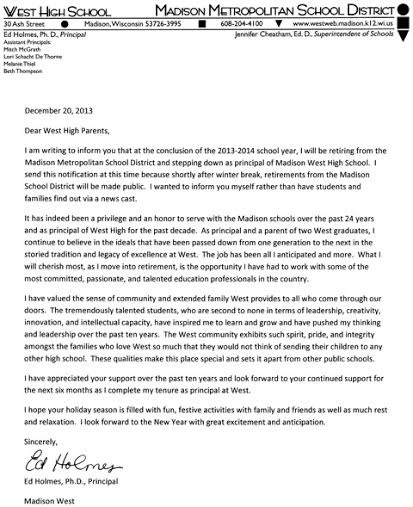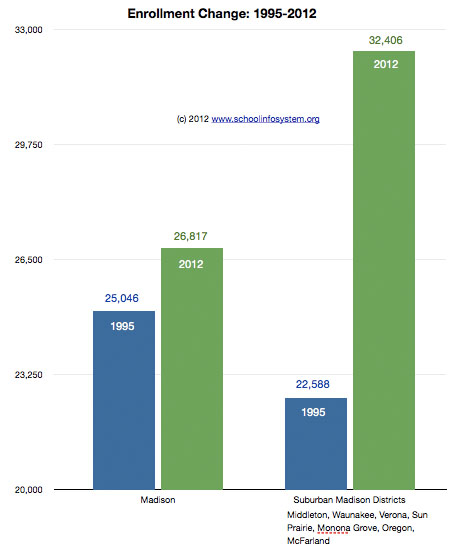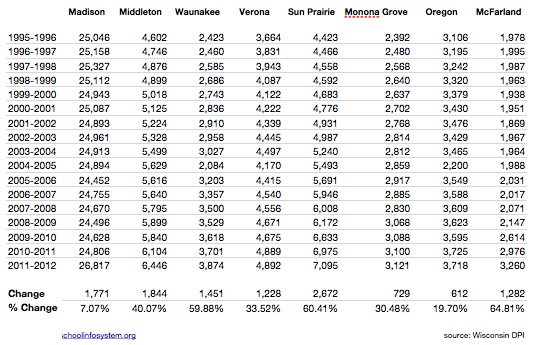Matthew DeFour:
The state Department of Public Instruction is requiring backers of the proposed Madison Preparatory Academy to provide scientific research supporting the effectiveness of single-gender education to receive additional funding.
The hurdle comes as university researchers are raising questions about whether such evidence exists. In an article published Thursday in the journal Science, researchers also say single-gender education increases gender stereotyping and legitimizes institutional sexism.
Efforts to justify single-gender education as innovative school reform “is deeply misguided, and often justified by weak, cherry-picked, or misconstrued scientific claims rather than by valid scientific evidence,” according to the article by eight university professors associated with the American Council for CoEducational Schooling, including UW-Madison psychology professor Janet Hyde.
The Urban League of Greater Madison originally proposed Madison Prep as an all-male charter school geared toward low-income minorities. But after a state planning grant was held up because of legal questions related to single-gender education, the Urban League announced it would open the school next year with single-gender classrooms in the same building.
I find this ironic, given the many other programs attempted within our public schools, such as English 10, small learning communities, connected math and a number of reading programs.
Related: Co-Ed Schooling Group Study Assails Merits of Single-Sex Education and from Susan Troller:
A newly published article by child development experts and neuroscientists blasting the trend toward single-sex education as “pseudoscience” won’t help the cause of the proposed Madison Preparatory Academy.
Neither will the continued opposition of the South Central Federation of Labor, which reiterated its opposition to the Urban League-sponsored proposal this week because teachers at the school would not be represented by a union. The Madison Metropolitan School District has a collective bargaining agreement with Madison Teachers Inc. that runs through June of 2013, and Madison Prep’s plan envisions working conditions for its staff — a longer school day and a longer school year, for example — that differ substantially from the contract the district has with its employees.
With a public hearing on the charter school scheduled for Monday, Oct. 3, the debate surrounding Madison Prep is heating up on many fronts. The Madison School Board must take a final vote giving the charter school a go or no-go decision in November.
Kaleem Caire, CEO of the Urban League and a passionate proponent for the separate boys and girls academies aimed at helping boost minority youth academic performance, says he is unimpressed by an article published in the prestigious journal, Science, on Sept. 23, that says there is “no empirical evidence” supporting academic improvement through single-sex education.
Are other DPI funded initiatives held to the same “standard”?
The timing of these events is certainly interesting.
14mb mp3 audio. WORT-FM conducted an interview this evening with Janet Shibley Hyde, one of the authors. Unrelated, but interesting, Hyde’s interview further debunked the “learning styles” rhetoric we hear from time to time.
UPDATE: The Paper in Question: The Pseudoscience of Single-Sex Schooling:
In attempting to improve schools, it is critical to remember that not all reforms lead to meaningful gains for students. We argue that one change in particular–sex-segregated education–is deeply misguided, and often justified by weak, cherry-picked, or misconstrued scientific claims rather than by valid scientific evidence. There is no well-designed research showing that single-sex (SS) education improves students’ academic performance, but there is evidence that sex segregation increases gender stereotyping and legitimizes institutional sexism.


